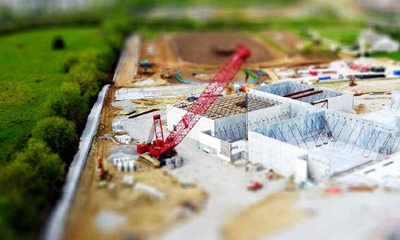THE CURRENT CONSTRUCTION INDUSTRY IN SRI LANKA

According to Trading Economics, the contribution to Sri Lanka’s GDP from the country’s construction industry in the fourth quarter of 2016 achieved a record all time high of RS. 200,970 Million. This was almost a threefold improvement from what it contributed just six years ago back in 2010. In fact, even its proportional contribution to Sri Lanka’s gross domestic product saw a year over year increase, from just 6.6% contribution in 2009 to 8.7% in 2013 and an impressive 9.6% in 2014. Finally, in the second quarter of 2017, the industry has reported a growth of 9.3% when compared to last year. As such, it is clear that the construction industry of the Pearl of the Indian Ocean is booming.
Therefore, it is important to be aware of where the industry stands right now, so we can have an idea of where it will be heading in the near future.
What is happening in Sri Lanka’s Construction Industry?
According to the stock brokering firm, First Capital Equities, the industry saw a slowdown back in 2015, when the newly elected government halted a number of previously initiated high profile construction projects such as the Colombo Port City and the Lotus Tower. These were expected to add a considerable number of apartments and condominiums as well as commercial properties to the Sri Lanka’s property market.
Nevertheless, after environmental reviews, the projects were given the green light with the Lotus Tower projected to be completed first, by March 2018.
In addition to that, the country’s construction industry has also seen acceleration since 2011 due to the addition of new airports, harbours, expressways and numerous real estate development projects.
The latter especially will continue boosting the industry through such upcoming projects such as the Shangri La mixed-use development, the Phase 2 of the Havelock City, the ITC Colombo One Hotel & Residences, Keells Waterfront Project. Few others to mention, would be the Capitol TwinPeaks, scheduled to be ready for occupation by end-2020, as well as Capital Heights by Access Engineering PLC commencing its construction on the 18th September 2017.
Furthermore, the industry will be further stimulated by infrastructure projects such as Construction of Central Expressway – Section II –Package A or the Rehabilitation Improvements to Peradeniya – Badulla-Chenkaladi Road.
Challenges faced by the construction industry today
The inability to carry out operations effectively and the extended process of obtaining approvals are some of the main challenges that hinder the current construction segment. For example, in an article published on Mirror Business, the Head of Sales and Marketing Neluka de Alwis said that Shangri La had to face some administrative delays due to being the first mixed development.
Furthermore, another on-going difficulty is the industry’s lack of skilled labour, which is causing massive delays for various projects. As mentioned by Sri Lanka’s Access Engineering, one of the reasons for this are the increasing employment rates and that aspirational workers are seeking higher salaries. In addition to that, construction workers are also faced with many health hazards at work.
The industry is also facing a challenge in obtaining adequate main construction elements like sand, metal and cement. As a result continuously providing high quality results is being questioned. The need to use alternate substitutes with the support of technology is essential in order to cater the prevailing construction boom. The growing demand for sustainability is also one of the main impediments the industry is facing right now.
What Direction Could the Local Construction Industry Take in the Future?
The President of Chamber of Construction Industry Sri Lanka, Dr Surath Wickramasinghe, who is also one of Sri Lanka’s leading architects, offered an insightful prediction into what we can expect from the island’s construction industry. According to him, the developers should plan long term, as the current growth of Sri Lanka’s construction sector should continue for the next 15 to 20 years. Despite of the current challenges, the Sri Lankan construction sector will continue to boom with the increase of affordable housing
, major residential and commercial projects. In 2016 September, First Capital Equities claimed that the Construction & Building Material Sector on the Colombo’s Stock Exchange is expected to have a 46% average return (annualized 29%) over an 18-month period. This is well above the expected market return.




